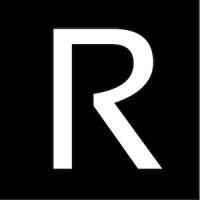Last weekend I lit the forest on fire
Plumas Underburn Cooperative volunteers maintaining a prescribed burn near Quincy, CA.
This past weekend I lit the forest on fire.
My friend Peter Kinne lives in a town called Quincy, population 1,706, nestled between where the Dixie Fire (second largest single-ignition wildfire in California’s history, 2021) and the Claremont Fire (part of the North Complex lightning fires of 2020) put the town on evacuation alert two years in a row. Residents there are familiar with what it feels like for their remote mountain town to grow into a base for firefighting operations, for neighbors to lose their homes, to know the fear of losing their own, to put out signage thanking the fire crews defending their land. And, they're doing things about it.
Peter took me to the spot where the Fly fire began in 2021, just outside of Quincy, CA. Smoke from this fire joined the Dixie fire smoke, which was also burning at that time.
Along with my kid, last Friday I packed a pair of leather gloves, cotton clothes, leather boots and a rake and I set off for the woods. It took a day to get there on windy roads, a journey made especially long because we had to stop to charge the truck (word to the wise, there's not a network of chargers up there, plan ahead). We went through lands that were ravaged by invasive mining during the Gold Rush in 1849, where fire's been managed and suppressed since the big fire of 1910, until eventually we reached scorched treelines that let us know we were almost there.
This was my second time at a prescribed burn, the second time I served under the auspices of a fire collective known as PUC, the Plumas Underburn Cooperative, which is managed by coordinator Logan Krahenbuhl. Since I started working at Rain I've been doing my utmost to learn about fire, the #goodfire and the catastrophic. The more I learn about prescribed fire the more I love it, and I'm not the only one—there's a wealth of these stories on Rx burns from Reuters to NOVA on PBS and even this recent Smithsonian story which features the folks at PUC themselves. Scientists established long hence that prescribed burns, and by extension healthy fire-resilient forests, store much more carbon than they release, and they don't overtake and scorch homes or cars—which of course when burned, release a complex potpourri of other toxins we really, really don't want in the atmosphere or our lungs.
Les Hall, of the Mountain Maidu tribe, explained some of his traditions at the fire I attended this past February.
California landscapes, and many others, have been stewarded with small, frequent fire for centuries by the people my ancestors displaced. (Fish and quail, for example, both seem to appreciate some amount of fire). There are all kinds of ways to conduct these purposeful fires, some of them more closely tied with their Native American roots. Cultural Burns, which are distinct from prescribed fire, are meant to create ideal circumstances for certain plants or animals. I haven't been able to witness this yet, though Les Hall of the Mountain Maidu said a few words before we started the fire I was at in February.
Then there's bigger prescribed burns, with more equipment and (I imagine) they might not welcome an 8 year old volunteer like the one I brought. PUC is different, and as long as he was with me and I was carefully watching, my son was welcome to learn how fire can be good for the land, first hand. I had the idea that my son should come because at the first fire I attended there was an entire family, mom (Teresa), dad, two kids (and their super friendly golden retriever), and when I asked Teresa about them being there she said, "I don't want my kids to be afraid of an element. And I want them to know how important it is to help their neighbors."
Monica Delmartini showing us the territory the rare Clara Hunt’s milk vetch prefers during a Sonoma County Open Space Fire Ecology Hike. This land was historically cared for by the Wapo people, who have taught Monica about their work first hand, and whom she acknowledged at the start of the hike.
Fire is nuanced, and the idea that there's good ones and bad ones... it's a bit of a gradient. At the start of April I went on a fire ecology hike organized by Tony Passantino at Sonoma County Ag + Open Space near where my mom grew up and the fire ecologist who is stewarding that land, Monica Delmartini, said that the Glass Fire (2020) that tore through had its plusses. A rare flower that had been losing ground to non-native grasses bounced back from 3 plants to 72 after the fire there. Douglas Fir forest is being converted back to Oak. Even though the fire was not planned, it did, "put something back on the land that it needs." On the other hand a big, beautiful specimen oak that had stood for a hundred years was caught in the blaze and it's not recovering—too many ladder fuels made it susceptible to the flames as they raced through.
Ron, a PUC volunteer and retired firefighter, defines the fireline before the burn with BB, who has been doing prescribed burns on his land for the past 20 years.
On the land I was burning this past weekend, the landowner Bob Beckwith (known as BB) has been burning to steward Black Oaks for acorn production, and the unstoppable blaze that was the Dixie fire came roaring over the mountain and laid down at the edge of his property and died. Such is the power of careful fire management. Burning this weekend I could see the results of his work, as the fire laced along the understory, low flames burning quickly through, leaving the big trees unscathed and putting itself out when it reached a fire break. This practice creates a healthy, mosaic landscape with open space for plants that need sun, and so that the larger trees are able, "to reach their full genetic potential," as Bill Jacks, another PUC volunteer and sometimes-burn boss, explained to me.
Bill Jacks (with his golden friend) was the burn boss (leader of the prescribed burn) for my first burn in February. A former wildland firefighter, he's now passionate about putting good fire on the land.
This week is #WildfirePreparedness Week, and here at Rain we're thankful for everyone who's taking a look at their corner of the world and caring for it so that all of us have a more resilient landscape. Underburns, cultural burns, firelines, defensible space, clearing out what fell and safely burning that in piles like Adam Ames' Uncle Ray and Aunt Betty—this is the season for it and now is the time to be #firewise. The land is wet enough and the material is dry enough, and we owe it to ourselves to take advantage of it. Because fire resilience isn't just going to come from automated firefighting helicopters stationed according to risk, it's going to come from a lot of things building into a healthy ecology. We're giving the woods options.
Adam's Uncle Ray conducting a pile burn to clear out dead wood from near his house. This is the season to carefully burn material—you'll see firewise people spending time by their burn pile all over the West. Before you burn, make sure you have the proper permits, a suppression plan in case the fire escapes your bounds, and never walk away until it's cold.
For anyone who wants to learn more about prescribed burns or fire in particular, I highly recommend the podcast The Big Burn, which I binge-listened to on the way up to the woods in February, and we listened to again on our way up this weekend. If it's any indication of the quality of the podcast, my kid refused to change to the audio version of Keeper of the Lost Cities and we covered four episodes on fire until he got too carsick to listen to anything at all. I'm not sure if he'd want to do another burn with me or not (it's pretty serious work) but the conversations we're having about the climate and what the land needs have been worth the drive already.
Peter holding the line as low flames reduce fuel load near a home. This particular burn was helped along by grants from an agency that helps seniors harden their homes. Organizations like PUC help people find grant money as well as to obtain the proper permits, learn how to safely run a prescribed burn and manage the volunteers who are needed to manage both laying the fire and holding it—neighbors helping neighbors.









